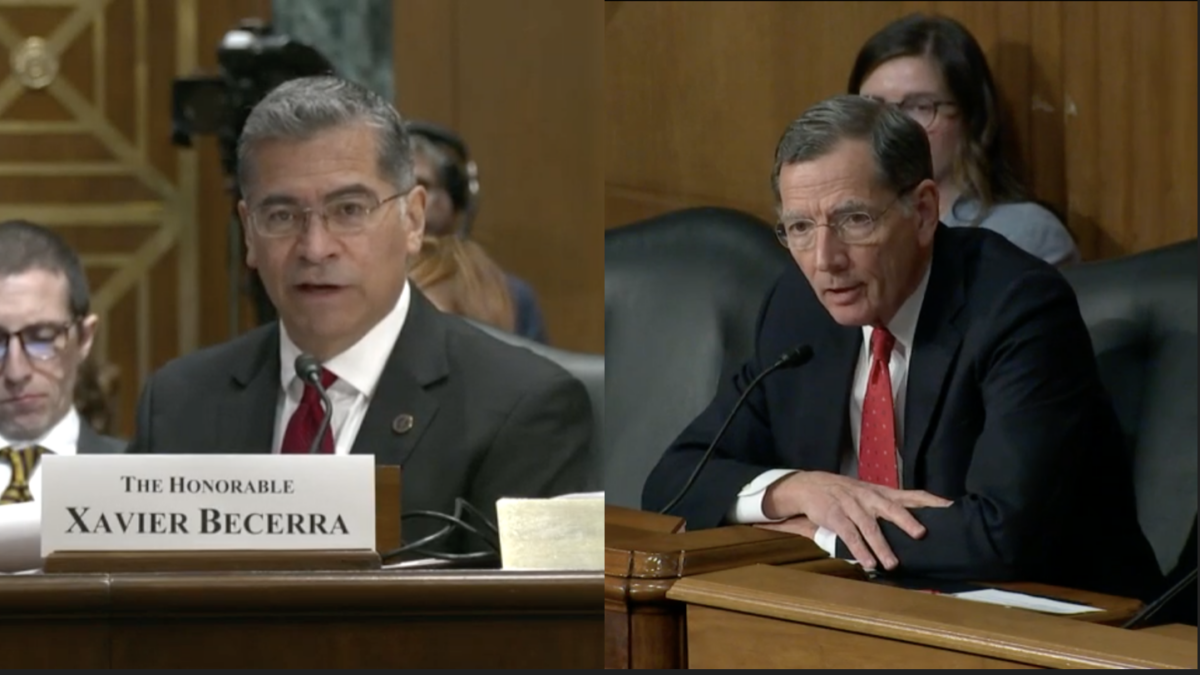
Donald Trump’s newly released position paper on immigration is the precise mix of fantasy and ignorance that one has come to expect from the recently self-described Republican. Specifically, his position paper reads like an outline of this April op-ed by Senator Jeff Sessions (R-AL). Trump is still a candidate in the GOP primary supported mainly by older white men who are not particularly conservative. Although the electorate has never been more supportive of expanding legal immigration, Trump has never been more opposed.
Trump’s position paper attempts to lay the foundation for his immigration policy as president. Below, I review how his ideas measure up. Quotes from his paper are in quotes, my responses follow.
Here are the three core principles of real immigration reform:
1. A nation without borders is not a nation. There must be a wall across the southern border.
2. A nation without laws is not a nation. Laws passed in accordance with our Constitutional system of government must be enforced.
3. A nation that does not serve its own citizens is not a nation. Any immigration plan must improve jobs, wages and security for all Americans.
The first sentence is true by definition, but assumes that for a border to be real, it must have a wall around it. Whether a wall is warranted should depend on the circumstances at the border, which are vastly more safe than Trump claims.
The last two principles are vague enough that they could support any immigration policy from a total ban on immigration to open borders. The rest of his position paper narrows their focus.
U.S. taxpayers have been asked to pick up hundreds of billions in healthcare costs, housing costs, education costs, welfare costs, etc. Indeed, the annual cost of free tax credits alone paid to illegal immigrants quadrupled to $4.2 billion in 2011.
This analysis factors in only fiscal costs, which will always lead to negative fiscal outcomes. It ignores the fiscal benefits that come from a larger economy. The fact remains that poor immigrants use less welfare than poor Americans. They contribute mightily to Social Security, Medicare, and other portions of the U.S budget. Over time, immigration’s impact on the U.S. taxpayer is about a net-zero. In other words, immigrants and their descendants pay for themselves.
Immigration can turn fiscally positive by further restricting welfare access. Right now illegal immigrants do not have access to means tested welfare programs, but their American born children do. However, their benefit levels are adjusted downwards to account for the non-eligible members of their households. Short of lowering welfare benefit levels for everybody, which would be a positive move, the government cannot deny citizens access based on who their parents are. However, Congress can deny all non-citizens access to welfare. Cato has published the only guide of how to do that. Removing the Earned Income Tax Credit for unauthorized or other categories of non-citizens would also be easy.
The position paper doesn’t factor in the estimated $400 to $600 billion government cost of removing all unauthorized immigrants as well as the lost tax revenue from the subsequently smaller economy. Doing so reveals how fiscally damaging this immigration plan would be if it ever became law.
The effects on jobseekers have also been disastrous …
The influx of foreign workers holds down salaries, keeps unemployment high, and makes it difficult for poor and working class Americans – including immigrants themselves and their children – to earn a middle class wage.
There is a lot of research on whether immigrants displace Americans in the job market – and the general finding is that immigrants displace very few American workers.
David Card and John DiNardo looked at native responses to immigration in American cities to test the so-called “skating rink” model of native location decisions that assumes each new immigrant knocks an American out of the workforce. If the skating rink model is correct, natives with skills similar to immigrants should vacate areas where immigrants move to and not move to areas where immigrants are residing. Instead they found that an increase of the immigrant population in specific skill groups leads to small increases in the population of native-born individuals in the same skill group. Immigrant-induced changes in the local economy, such as the creation of new businesses and new types of industries, creates enough new jobs to make up for any displacement of native workers.
Another paper by Card did not find any change in native mobility due to immigration, but he discovered negative wage effects for some skill sets. However, he also found that inflows “reduced the relative employment rates of natives and earlier immigrants in laborer and low-skilled service occupations by up to 1 percentage point, and by up to 3 percentage points in very high-immigrant cities like Los Angeles or Miami” (emphasis added).
Card’s findings in his second paper are consistent with the later findings of Gianmarco Ottaviano and Giovanni Peri that newer immigrants compete with the immigrants who preceded them, not with native-born Americans who have similar skills. The labor market effects of new immigrants appear to fall most heavily on immigrants who preceded them, not Americans, which would seem to cut against the theory that immigrants have a large negative effect on American workers. In other words, immigrants don’t compete against Americans, they only compete against other immigrants.
Even then, Card and Ethan Lewis looked at how new Mexican immigrants displaced older Mexican immigrants and found decidedly small effects. Only in Los Angeles and El Paso, TX did new Mexicans push out older Mexicans. In all of the other cities they examined, new Mexican immigrants complemented the existing Mexican immigrant workforce rather than displaced it. The U.S. economy is very good at attracting Mexican immigrants, providing incentives for them to settle in areas where they are most demanded, and responding in ways that increase net production and employment.
A paper by George Borjas seems to find the greatest effect of immigration on the wages of native-born American workers, a wage elasticity of –0.39. Borjas’s finding has been criticized by many, including in this recent paper that extended his period of analysis by 10 years but found only a –0.2 wage elasticity as well as other potential problems with his methods. Another paper by Peri and Chad Sparber also questioned Borjas’s paper, finding that less educated immigrant workers and native born workers specialize in different tasks, thus inducing natives to reallocate their task supply, thereby reducing downward wage pressure. Foreign-born workers specialized in occupations that required manual labor and physical skills while natives pursued jobs that required more intensive communication and language skills. Immigration induces natives to specialize accordingly, reducing the negative wage effect of immigration by roughly 75 percent. In other words, natives do not react to immigration by leaving the workforce or moving to different areas, but by changing their skill sets and occupations.
If immigrants compete most with anybody, they compete with teenagers. However, a Chicago Fed Letter and research paper authored by Daniel Aaronson, Kyung-Hong Park, and Daniel Sullivan discovered that teens have declining labor force participation rates for reasons other than immigration like an increase in the relative benefits of education versus work, government financial incentives for schooling, merit-based scholarships with minimum grade requirements, and education grants. In other words, teens allocated their scarce time to education and away from work to increase their investment in acquiring human capital and, hence, a higher future income. Low-skilled immigration and stiffer labor market competition was not a compelling explanation for their decline in labor force participation.
Another report by the U.S. Bureau of Labor Statistics in 2002 echoed the findings of Aaronson, Park, and Sullivan when it concluded that teen Labor Force Participate Rates dropped because they were more likely to be enrolled in school. Competition with immigrants didn’t push them out of the labor market.
Patricia Cortes does find some displacement effects across cities. These effects are not large enough to equalize wages across the country, and thus not large enough to induce the displacement of one American worker for each immigrant worker. Cortes found that three natives move out of a city for every 10 immigrants who move in.
Over the last 20 years, immigrants occupy about as many jobs in the economy as their percentage of the working age population would predict.
These academic papers do not produce a compelling reason to believe that immigrants displace native-born workers in large numbers nor that they lower American wages. There is likely some job displacement or wage effects caused by immigration, but the effect is small compared to the benefits they provide.
The impact in terms of crime has been tragic. In recent weeks, the headlines have been covered with cases of criminals who crossed our border illegally only to go on to commit horrific crimes against Americans. Most recently, an illegal immigrant from Mexico, with a long arrest record, is charged with breaking into a 64 year-old women’s home, crushing her skull and eye sockets with a hammer, raping her, and murdering her. The Police Chief in Santa Maria says the “blood trail” leads straight to Washington.
Some immigrants do commit heinous crimes. Our immigration enforcement system should be almost entirely focused on removing actual security and criminal threats rather than being concerned with regulating the labor market. However, immigrants are less likely than natives to commit crimes or be incarcerated for them. Please read this detailed literature review for more information.
The cost of building a permanent border wall pales mightily in comparison to what American taxpayers spend every single year on dealing with the fallout of illegal immigration on their communities, schools and unemployment offices.
Building a border wall won’t solve any of the problems that Trump describes. First, border apprehensions are near their post-1970 historical low point. Second about 42 percent of unauthorized immigrants entered legally and overstayed their visas. A border wall won’t prevent them from entering. Third, better border enforcement could actually increase the illegal immigrant population by locking them in the United States. Illegal immigration was largely a circular phenomenon until the late 1980s when the United States increased border security. Migrants would enter the country, work, and return home secure with the knowledge that they could return in the future again. When border security was beefed up in the late 1980s, the costs of crossing the border increased so these migrants decided to stay instead of returning home. When the migrants can’t go back and forth, their families come north.
Mexico must pay for the wall …
No matter who writes the checks, we all pay for a border wall. The decrease in economic activity caused by more regulation of labor markets required by this plan will make the United States, Mexico, and other countries poorer as a result.
The purpose of building a wall would be to decrease illegal immigration, but a functional legal immigration system would be far more effective. As I detail here, guest worker visas are the most effective way of halting unauthorized immigration because they provides a lawful pathway for low-skilled immigrants to enter instead of overstaying a visa, running across a desert, or being smuggled in. A guest worker visa system will funnel peaceful migrant workers into the legal system leaving immigration enforcement to deal with a much smaller pool of unlawful immigrants.
Congress did open up guest workers a bit in the 1950s, which ended up cutting unauthorized immigration by over 90 percent by creating a low-skilled guest worker visa called the Bracero Program. That program later ended due to union pressure and controversies over poor treatment of some of the workers, causing unauthorized immigration to immediately skyrocket. The program was shut down after domestic unions, especially Cesar Chavez’s United Farm Workers, mounted a national campaign against it.
According to Stuart Anderson of the National Foundation for American Policy, a February 1958 Border Patrol document from the El Centro, California district states, “Should Public Law 78 [Bracero Program) be repealed or a restriction placed on the number of braceros allowed to enter the United States, we can look forward to a large increase in the number of illegal alien entrants into the United States.” That is exactly what happened.
The government cannot regulate immigration if much of it is illegal. Legalizing the flow of workers into the United States is a simple and cost-effective way to control the border and limit unlawful immigration. The border was controlled in the past with many fewer government employees, it can happen again.
Nationwide e-verify. This simple measure will protect jobs for unemployed Americans.
E-Verify is a failure. Since 2008 Arizona, Mississippi, South Carolina, and Alabama have mandated it for all new hires in order to turn off the “jobs magnet” that attracts illegal immigrants. However, the wages for illegal immigrants barely budged in those states (they would have to drop to weaken the jobs magnet).
E-Verify doesn’t work for two main reasons. The first is that E-Verify only identifies unlawful workers about half of the time. That means half of unlawful workers get hired lawfully when using E-Verify. The second is that only about half of employers in states where it is mandated actually use it. If Arizona, Mississippi, South Carolina, and Alabama cannot make E-Verify an effective immigration enforcement tool in their states then it will fail when mandated nationally.
E-Verify is a fancy-sounding immigration enforcement tool but it simply does not work. The only thing worse than a mandated E-Verify program that doesn’t work, as Trump proposes, is one that does work. We can at least be thankful that E-Verify fails otherwise it will do a lot more harm to the labor market.
End birthright citizenship. This remains the biggest magnet for illegal immigration. By a 2:1 margin, voters say it’s the wrong policy, including Harry Reid who said “no sane country” would give automatic citizenship to the children of illegal immigrants.
Most agree, with the exception of Judge Richard Posner, that a Constitutional amendment would be necessary to overturn birthright citizenship.
Legalities aside, removing birthright citizenship would severely affect assimilation of immigrants in subsequent generations. The U.S. rule of birthright citizenship is in stark contrast to policies pursued in Germany and Japan, where the children of immigrants were denied citizenship. Below I summarize some work from here.
The lack of birthright citizenship created a legal underclass of resentful and displaced youth who were officially discriminated against in the government-run education system and had tenuous allegiance to the nation in which they were born. After four generations in Japan, ethnic Koreans still self-identify as foreign. In both countries, these noncitizen youths are more prone to crime and extreme political ideologies like communism or Islamism.
Youths born to noncitizen immigrants in nations without birthright citizenship have little legal stake in the nations they were born in but also have no place to go. Many might gain citizenship through the ethnicity of their parents in Korea or Turkey, but with no connections to those nations, citizenship there is meaningless.
In the U.S., by contrast, children of immigrants are legally on the same playing field as children born to American citizens. Both can serve in the military, purchase firearms, serve on juries, and be treated the same by the legal system. That is one reason why 89 percent of second-generation Hispanics and 96 percent of third-generation Hispanics have described themselves as American only. “Hispanic-American” or “Mexican-American” is still popular after several generations, just as “Italian-American” still survives, but these Americans do not view themselves as foreigners. Removing birthright citizenship would end this successful assimilation trend.
Every year, we voluntarily admit another 2 million new immigrants, guest workers, refugees, and dependents, growing our existing all-time historic record population of 42 million immigrants.
About 13 percent of America’s population is foreign born, below the all time peak of 14.7 percent in 1910. The average percent of the population that was foreign born between 1860 and 1920 was about 14 percent – higher than it is today. As a percentage of the U.S.-born population, yearly immigrant flows to the U.S. are half of what they were during the 19th century and early 20th centuries. As a percentage of the U.S. population, this is not a historical high point.
Other countries that weathered the Great Recession well like Canada, Australia, and Switzerland all let in far more immigrants as a percentage of their population every year and have far larger immigrant populations than the United States. Switzerland, for instance, lets in about five times as many immigrants as the U.S. does every year as a percentage of their population. The percent of the U.S. population that is foreign born is also below the OECD average. In and of itself, that is not an argument for opening lawful immigration, but it should damper the notion that the U.S. has the most immigrant friendly policies in the world. The numerical numbers of immigrants who come here yearly is large, about the same annual number as a hundred years ago, the U.S. has the third largest population in the world to absorb them.
Increase prevailing wage for H-1Bs. We graduate two times more Americans with STEM degrees each year than find STEM jobs, yet as much as two-thirds of entry-level hiring for IT jobs is accomplished through the H-1B program. More than half of H-1B visas are issued for the program’s lowest allowable wage level, and more than eighty percent for its bottom two. Raising the prevailing wage paid to H-1Bs will force companies to give these coveted entry-level jobs to the existing domestic pool of unemployed native and immigrant workers in the U.S., instead of flying in cheaper workers from overseas. This will improve the number of black, Hispanic and female workers in Silicon Valley who have been passed over in favor of the H-1B program.
There are 85,000 annual slots available for H-1B workers. This year they were all taken up in about a week. New wage regulations would have to be extreme to decrease the number of H-1B visas admitted. Creating them would slash the well-known economic benefits of skilled immigration.
If Trump is concerned about the small number of cases where H-1B workers have been used to displace Americans, then he should support amending the H-1B program so that the workers are portable and able to change employers easily. Currently it is very legally difficult for the workers to change their jobs making it possible for unscrupulous employers to exploit them and thus displace American workers. Such a reform would be welcome regardless of the reasons for doing so.
Immigration moderation … This will help reverse women’s plummeting workplace participation rate, grow wages, and allow record immigration levels to subside to more moderate historical averages.
It’s simply not true that closing the border will increase real wages for Americans. Immigrants increase the size of the economy, create employment opportunities that in turn increases demand for labor, and make the United States a wealthier country. Removing millions of people from the United States and preventing others from coming is a path toward slower economic growth, not prosperity.
The purpose of moderating immigration is to get U.S. economic growth in line with the high growth era in the immediate post-World War II period. But the United States did not have a shrinking or stagnant workforce from 1948 to 1973, the period of the greatest economic expansion and rising wages. On the contrary, the U.S. workforce expanded rapidly during economic growth. Merely decreasing the number of workers today by decreasing immigration will not replicate that period of economic growth.
Furthermore, immigration was not as closed during that time period as many claim. The Bracero guest-worker visa program let in nearly five million lower-skilled Mexican workers to temporarily labor in American agriculture. The workforce grew in other ways too. From 1948 to 1982, the size of the U.S. workforce practically doubled from 60 million to 111 million. A baby-boom, women entering the workforce, and other internal migrationsincreased the number of workers. The number of working women increased from 16.3 million in 1948 to 43.3 million in 1982 to 73 million in 2012. The number of male workers shot up to from 43 million in 1948 to 76 million in 2012. Female labor market gains did not take jobs away from men. Those increases did not lead to massive unemployment or a drop in wages – which would be the result if increased labor scarcity is a path to prosperity. There is not a fixed supply of jobs to be divided up amongst Americans: the market constantly creates and destroys new job opportunities and increasing supplies of workers and consumers help that process along.
Trump’s theory that the supply of workers is the prime determinant of wages ignores much. Worker productivity is also influenced by the type and quantity of capital in the economy, the differences between immigrant workers and native-born workers, and the availability of technology. In a well-functioning economy, increased supplies of workers increases demand for workers, which don’t lead to more unemployment.
Conclusion
Donald Trump’s position paper on immigration is full of old anti-immigration arguments that have been repeated and rebutted numerous times. These arguments were incorrect long before he wrote them here. Trump’s position paper is a most similar to this op-ed by Senator Jeff Sessions (R-AL). There is very little in it that is new – either as a policy prescription or as a justification.
This article was reprinted with permission from the CATO Institute.









